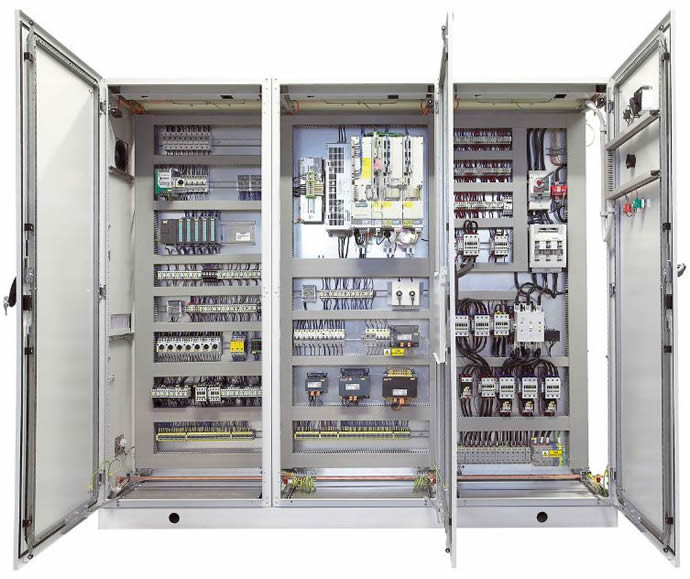HEMP protection filters dedicated to commercial use
With a history of providing the aerospace and defence sector with HEMP and IEMI filters, MPE was well placed to introduce what the company claims to be the world’s first range of HEMP protection filters designed and developed specifically for the commercial marketplace - launched at the EuroEM 2016 event which ran at Imperial College, South Kensington, London SW7, from July 11th-14th. Image left shows a burnt out PCB following a HEMP attack.
The level of protection for commercial uses need not be as great as for military applications, yet the threat to public utilities, telecommunications, transportation, computer networks, data centres, control rooms, the emergency services and other key national infrastructure is just the same, whether the application is military or civilian. Destructive incoming conducted pulses will be carried directly into equipment systems via power and signal cables with little or no attenuation, so HEMP filtering on incoming lines is essential.
Awareness around HEMP is increasing significantly outside the traditional sphere of the military in line with the level of vulnerability. Paul Currie, Sales and Marketing Director, MPE commented: “As our technology has moved on, so has the technology that produces the threat. Ten years ago we were genuinely looking at missiles that could be fired and detonated in the atmosphere. Now we’re talking about commercially available products that can be used to create that same level of threat. So the threat has not only become more sophisticated but also far more readily available.”
The IEC (International Electrotechnical Commission) published a standard in November last year to focus on what’s loosely termed as commercial HEMP. Previously if an organisation had to protect against a HEMP threat the only thing to test against was the over-arching military standard which Currie claims is very onerous. He continued: “We as filter suppliers had to manufacture a very high performance product and with that comes cost – and we’re talking about hundreds of thousands, if not millions of pounds.”

He added: “What was recognised is that when you move into the commercial sector, that sort of investment simply is not going to happen – it’s a grudge purchase a bit like CCTV. People purchase it for two reasons, either something has happened and they don’t want it to happen again or the insurer states that premiums will be increased if a level of protection is not installed. So the IEC recognised this and published a standard where you can test to a lower level of HEMP protection, so there are now three classifications depending on the requirements of the facility.”
The new range of HEMP filters have been developed following the work conducted by the IEC 77C Sub-Committee, on which MPE’s Technical Director and Senior Design Engineer were sitting. That work culminated in the publication of the new Standard IEC/EN 61000-4-24 (‘Test Methods for Protective Devices for HEMP Conducted Disturbance’).
The three Levels of Severity as defined in IEC/EN 61000-4-24, with their respective peak residual currents, are as follows.
Protection to Severity Level 3 (equivalent to Mil-Std-188-125-1 and Def-Stan 59-188 Part 1): This is well suited for military applications and the most stringent critical infrastructure protection, and offers the best approach, using a full shielded room offering at least 80dB of shielding performance to 1GHz for HEMP only (or 10GHz to cover IEMI as well) with full performance MPE HEMP filters. It provides the most comprehensive threat protection, even when the intrinsic shielding of equipment, enclosures and building structures is an unknown factor.
Severity Levels 1 and 2: Protection to Severity Levels 1 and 2 is defined in IEC/EN 61000-4-24 for less critical commercial applications. The level required is selected by users depending on their application and the degree of protection needed.
Level 2 protection is recommended for critical commercial infrastructure, whereas Level 1 is for industrial applications with a greater level of natural immunity, and/or less critical requirements.
MPE’s range of commercial HEMP powerline filters specifically meet the requirements of Severity Levels 1 and 2, as distinct from trying to adapt off-the-shelf, military grade HEMP filters at prohibitive costs for extensive commercial use. In order to be widely adopted for civilian use, effective HEMP protection needs to be more affordable and accessible, and MPE is now providing that solution.
Currie added: “For commercial installations we can provide these filters at a much lower cost and a much more affordable financial outlay. Of course, what is also crucial to these organisations is knowing how real this EMP threat is, so we’re working on a low cost EMP detector. The fact is that many organisations don’t know whether their installation is vulnerable, so these devices can be put in place to monitor whether there are already EMP threats (how many times does the computer system lock up or the phones go off – which might be an EMP event – deliberate or otherwise).
“So we are developing methods of detection so somebody, for a much lower cost, could put something in place for three or six months, for example, to monitor a particular area and then make an informed decision based on the results. Everyone has limited budgets, which in some cases are shrinking, so people need to think wisely about where they’re going to spend money.
“So anything that makes that threat more tangible i.e. yes there is EMP activity, it makes it more affordable for people.” MPE predicts that these EMP detectors should be available in the next nine months.


